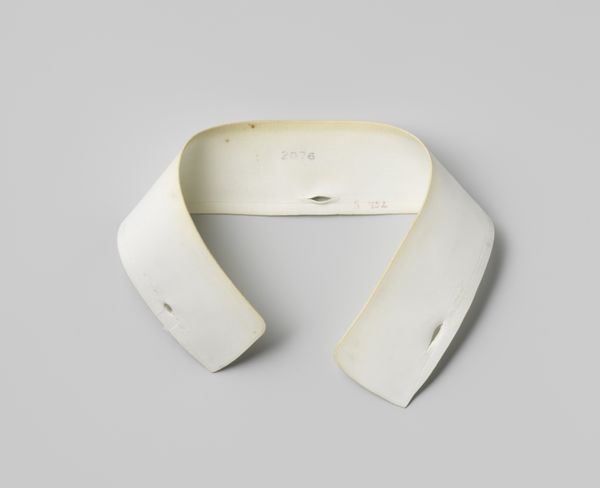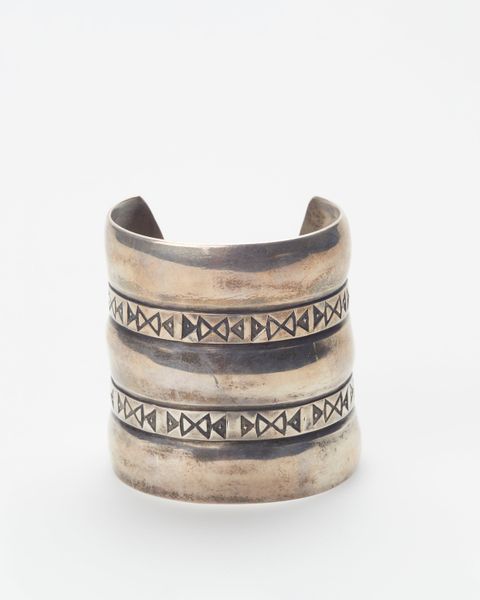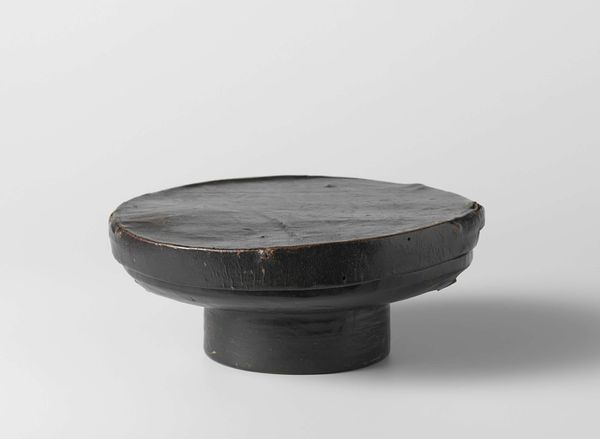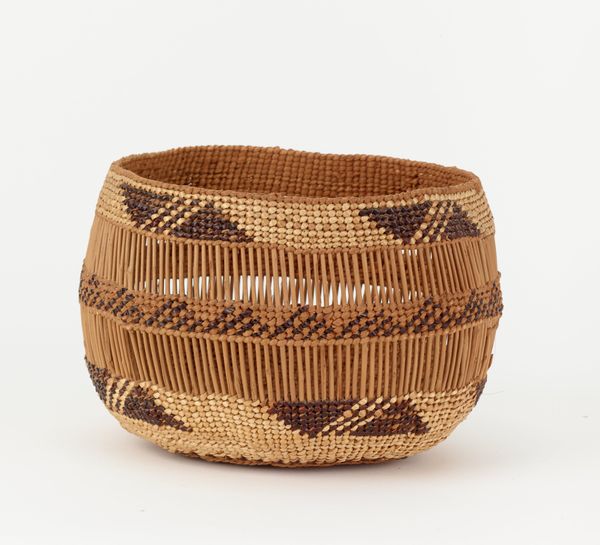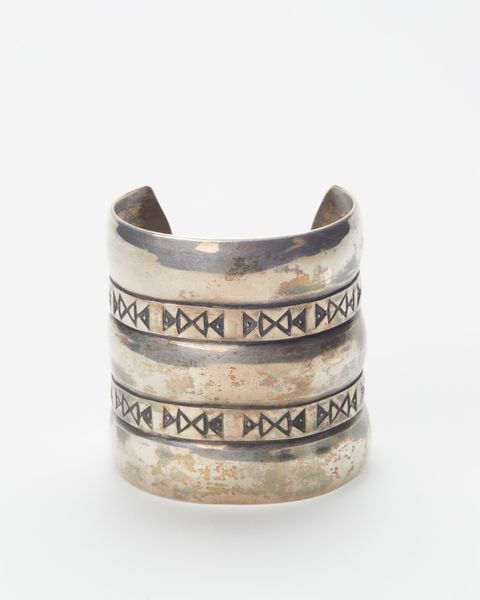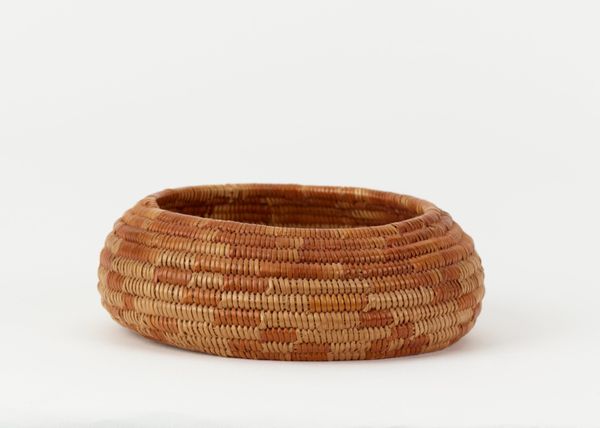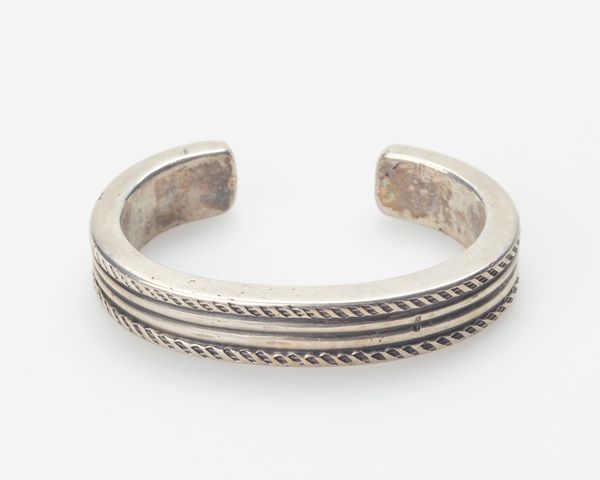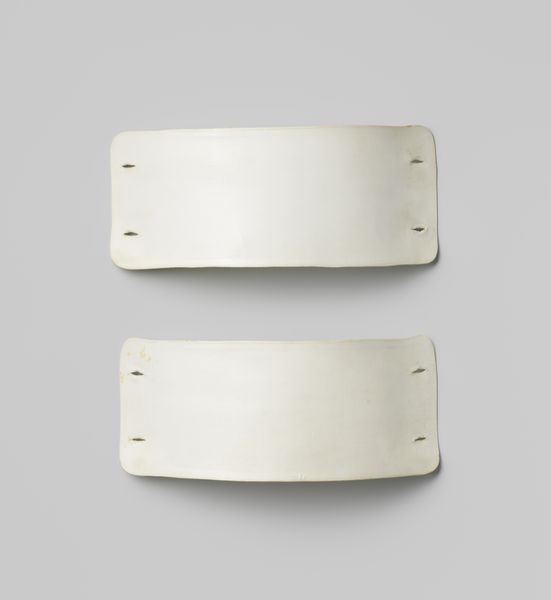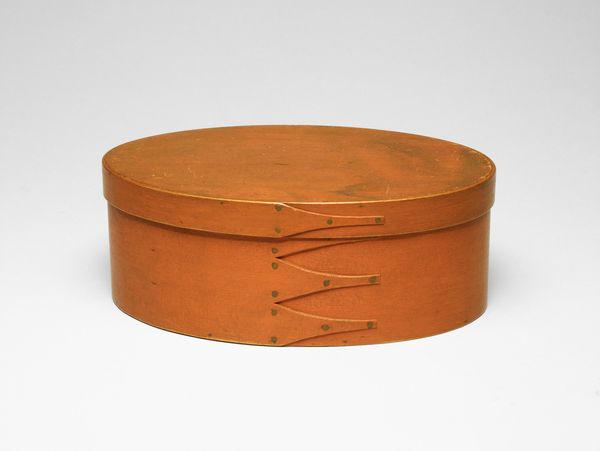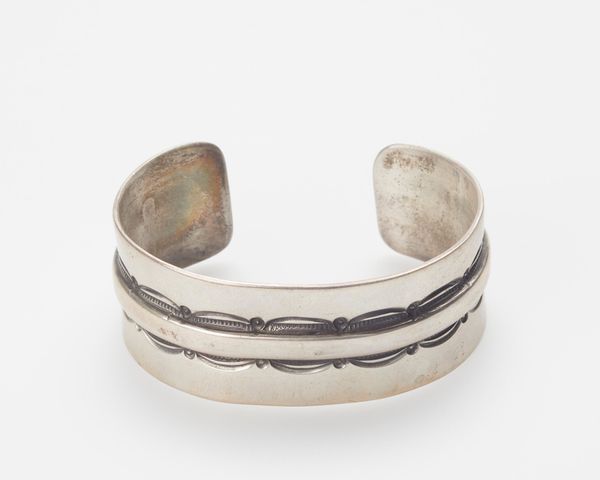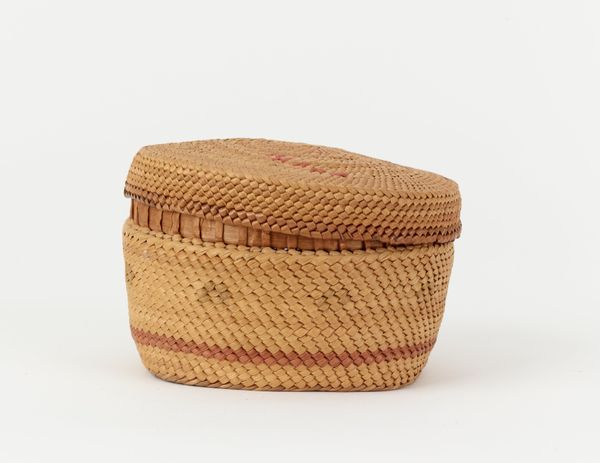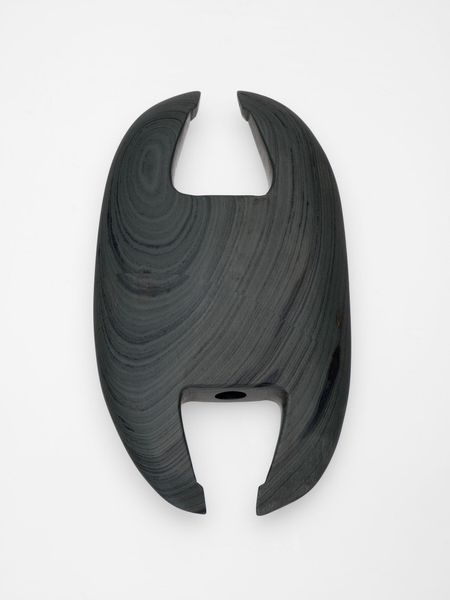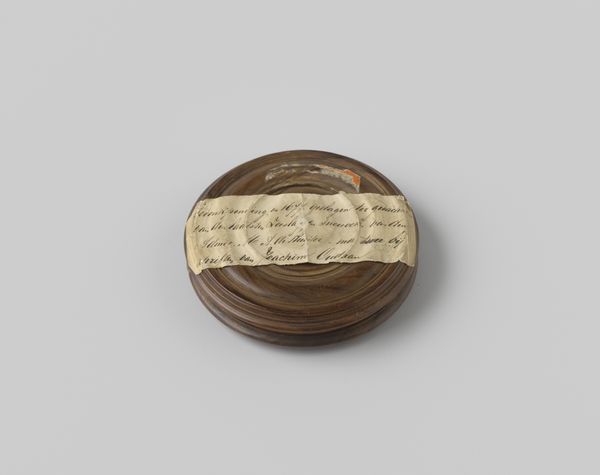
carving, sculpture, wood
#
carving
#
form
#
geometric
#
sculpture
#
wood
#
prehistoric
Dimensions: 4.6 × 10.3 cm (1 13/16 × 4 1/16 in.)
Copyright: Public Domain
Editor: This is an elegantly simple object, a Double-Edged Bannerstone from around 5800, currently held at the Art Institute of Chicago. It's carved from wood and possesses a smooth, dark surface. There's something profoundly calming about its form, but I'm curious, how do you interpret this work within the broader scope of prehistoric art? Curator: Well, looking at the bannerstone, it’s essential to consider it within its historical and social context. While it appears purely aesthetic to our contemporary eyes, these objects likely held significant symbolic weight within Archaic societies. How might the carving's geometric form intersect with societal structures or belief systems of that time? Consider that even the choice of wood speaks to something specific. What trees were held sacred? Who had access to carving skills and why? Editor: That's a great point. I was focusing solely on the object's formal qualities, but not the implications behind the making and usage. The central perforation also seems important, considering its functional past and, possibly, gender roles. Was it accessible to everyone, or restricted? Curator: Exactly! That central hole suggests functionality, possibly as a weight for an atlatl or spear-thrower, assisting hunters—perhaps traditionally male ones. Now, how does considering its potential function impact our reading of the work? Are there undertones of power, of masculinity even? Does this simple, abstract object carry implications of social roles or dominance that challenge modern views? Think about access to hunting as a way to support society in general. Editor: That definitely gives me a lot to think about! Seeing it as connected to gender and power structures makes the bannerstone so much more complex. It’s no longer just a pretty shape. Curator: Precisely. By analyzing these intersections, we can move beyond aesthetics and gain deeper insights into the lives and beliefs of the people who created and used this object. I believe this illuminates just how art can play a huge roll within society, and this work certainly demonstrates that idea. Editor: Thank you for sharing your insights! I'm now thinking about how an object's use relates to art theory.
Comments
No comments
Be the first to comment and join the conversation on the ultimate creative platform.
